How To Use Images Without Copyright
Photos: 11 great tools to find and use images without copyright infringement
Updated Feb 26, 2018
Every blogger knows that images are essential both to better storytelling and alluring an audience, but non every blogger creates their ain photographs. This commodity is intended to help you lot notice and use good images without infringing on some other person's artistic holding (i.e., stealing.)
Photographers are no different from bloggers, authors, software engineers or anyone else whose living depends on the intellectual holding they create. Many photographers are highly compensated for their piece of work and won't hesitate to accept action if they find that 1 of their images was purloined, as they should. Receiving a demand letter of the alphabet (or an invoice!) from an aggrieved copyright owner is something to avoid.
Allow's start with a couple of basic rules:
- Giving credit does non by itself make using someone'due south images ok or legal.
- Many photographers make obtaining permission like shooting fish in a barrel.
- There are lots of ways to become images that are freely available.
- Many photographers are happy to give permission (sometimes even for free) if you only ask first.
For a good discussion about using other people'due south content generally, check out this web log postal service past chaser Ruth Carter. For images, Carter says she relies on images that are protected under a Creative Commons license to change and commercialize the original.
What is copying? Copying is taking someone else's image, either by downloading their file or taking a screenshot or duplicating their image in any way and publishing it yourself on a website that you command or anywhere else. If you upload a file, yous are publishing — and it doesn't matter whether it is on a corporate website, a weblog, Facebook or any other social media platform.
What is non copying? If you are not touching the image file and simply providing a link that pulls the prototype from someone else's website, y'all are not copying the image. Many media outlets provide embedding code so that you tin display one of their images on your website in the exact style that they allow. If you use a provided embed code without modification, y'all are linking to the copyright holder'south website or server and doing then with permission. (There is a case awaiting in federal courtroom in New York that will determine whether embedding an image without explicit permission to do so may borrow on copyright. Watch this space.)
What about retweets or other shared social media posts? Every bit with near legal questions, it depends. Generally, if y'all simply retweet or share someone else's postal service without adding anything to the post or modifying the other person's work, you are in relatively safe territory. Still, if the original post infringed someone's copyright or privacy or has any other legal issues, you certainly could be dragged into litigation over it.
For example, in some states, anyone can take a photo of people on the street, but those images cannot be legally published without the permission of the people in the image. If i those people sue, they could reasonably go subsequently anyone who shared the epitome. This is why information technology is important to be careful about what you retweet, and disclaimers do not shield you at all.
How practice I go permission? Professional sites ordinarily take instructions for requesting or purchasing permission (a "license" to utilize an image.) If you find an paradigm on someone'southward personal website that you want to utilise, just send an e-mail to the possessor describing who you are and what you want to do with the image. I have done this many times and have never been turned downwards. Just make sure y'all find out exactly how the copyright possessor wants to be acknowledged, including whether they want a link back to their site.
All Rights Reserved
If you lot find an image that you lot like, check the copyright find. This is sometimes in the caption, although occasionally you have to hunt effectually on a website for it. If it says "All rights reserved," then you lot must obtain permission earlier using it.
The phrase "all rights reserved" is not mandatory. Unless content owners expressly give permission, y'all should presume that they are keeping all utilise rights. That ways y'all must contact the owner and negotiate permission if you want to employ their material. Sometimes a quick email is all it takes. With companies, there may be rights management departments, forms to fill out, and licensing fees based on the intended use. For most bloggers, this is more trouble than it is worth.
Creative Commons
Artistic Commons is a framework for copyright protection that includes clear information on what permissions are available. Many people are happy to freely share their content for certain kinds of use, then at that place are a ton of images with a Artistic Eatables license. Just brand sure that y'all read carefully. There are 6 dissimilar categories. Only iii of those categories allow commercial employ. All half-dozen require attribution. The differences primarily have to exercise with commerical or non-commercial use and whether you tin alter the content or only utilize it exactly as the originator published it. More data about each of the Creative Commons licenses is bachelor on the Creative Commons website.
Image Search Tools
Here are some sources for images that can be used past bloggers and others without going through a lot of hoops for a license:
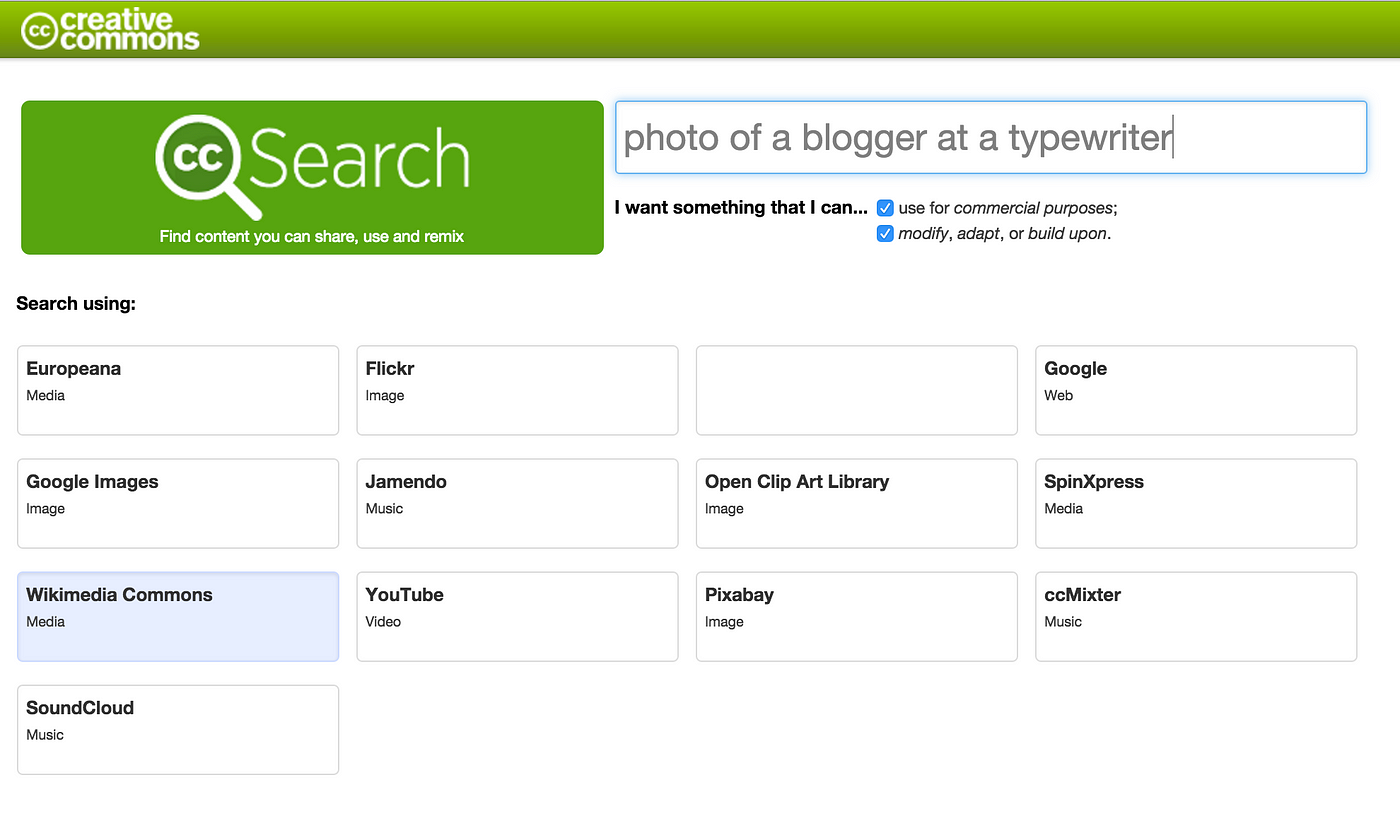
- Artistic Eatables has a portal to the search features on about a dozen sites that have images or other content bachelor for reuse. You tin can select whether you want to search for content that tin be used commercially or modified.

two. Wikimedia Commons is a repository for a vast array of images from individuals, organizations, libraries, government and other sources that are generally available for republishing. Many of the images are in the public domain, which means yous tin utilise them as yous like, no restrictions. The typewriter image hither was contributed by an individual who chose non to retain copyright.
Consistent with the sharing culture of Wikimedia (and Wikipedia,) the site prompts you to include a credit line and makes it easy. Merely click on the bar that says "You can attribute the writer" to get a ready-to-use plain text or HTML credit line.
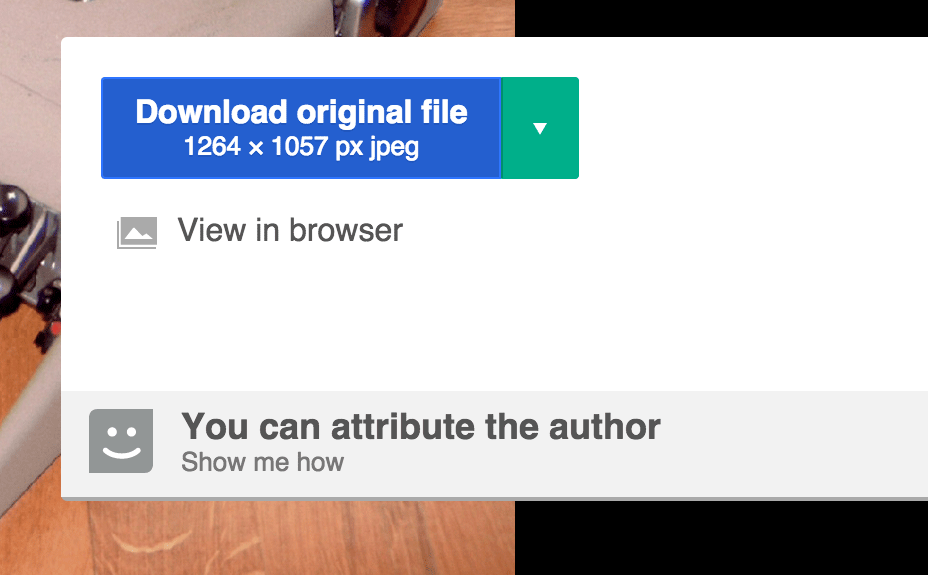
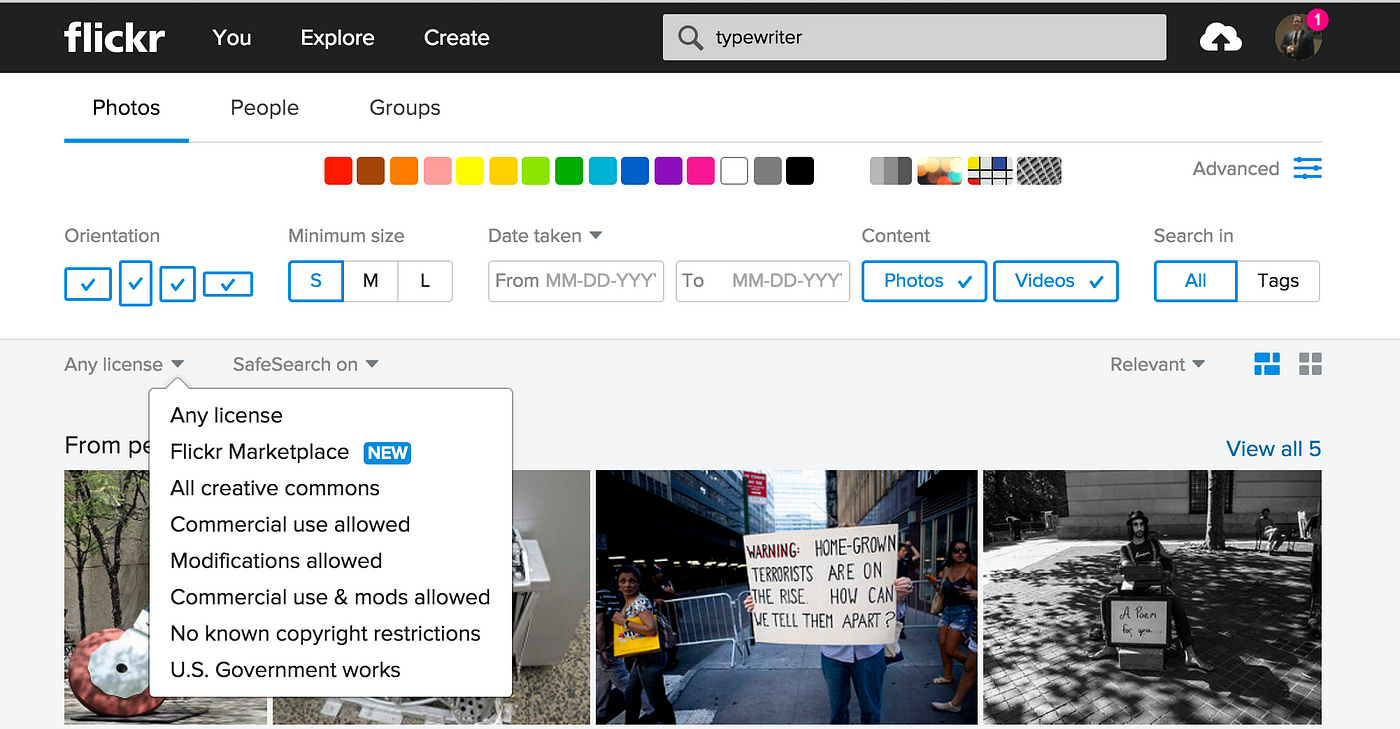
three. Flickr has long been a favorite site for photo sharing by serious amateurs and some professionals, in role because of its built-in rights management. If you search for an image, the copyright status is at the top of the download screen. Flickr also allows you to search by license type.
The options include the variations of Creative Commons licenses, no restrictions, and "U.Due south. Government works." (Come across below for more on this last category.)
xx
4. Pixabay is a search site for images that are in the public domain. It also has an especially skillful caption of what that means, and why "public domain" does not necessarily mean unfettered utilize.
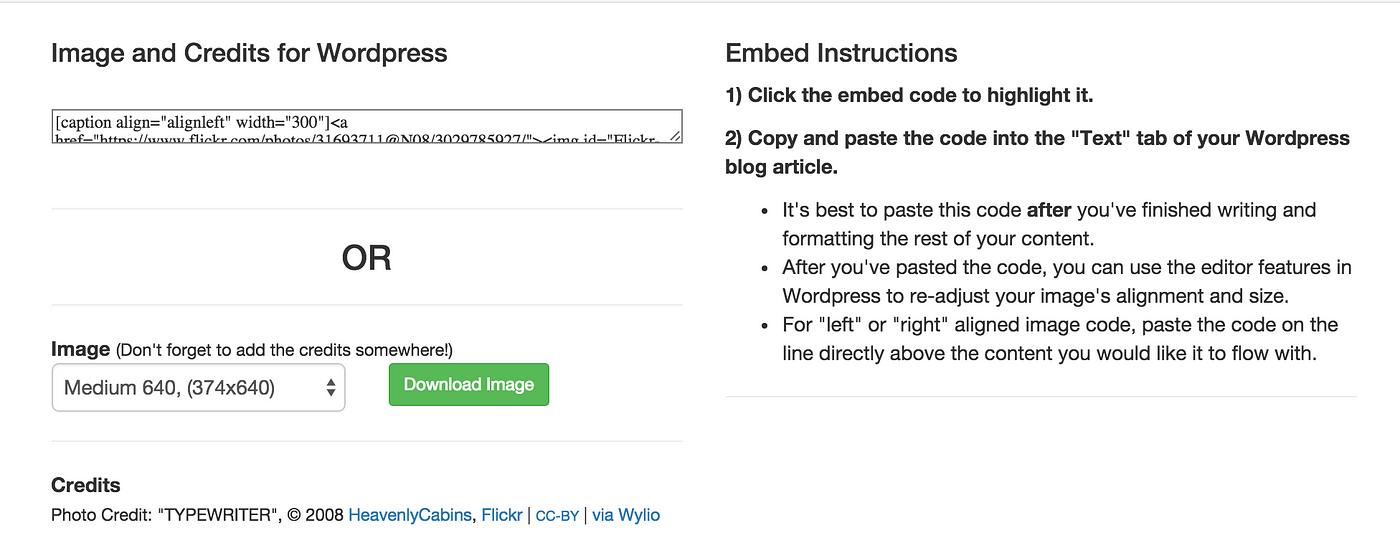
5. Wylio is a service that streamlines the process to discover and use images from Flickr. Basic search is costless, but for $3 a month, users can search and find images via Wylio.com and in ane step, obtain cut-and-paste embed code for Wordpress or other blogs. For non-Wordpress blogs, the image download button has the reminder: "Don't forget to add the credits somewhere," which is mandatory under Creative Commons licenses. Information technology also provides a credit line for immediate apply.
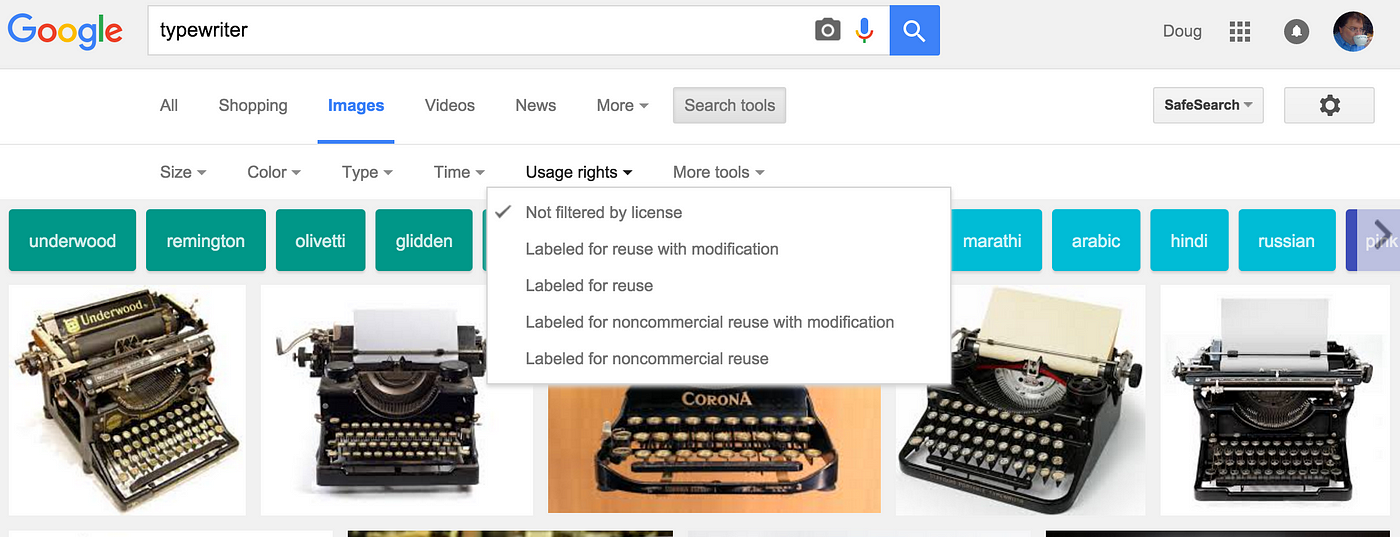
6. Similar to Flickr, Google Image Search has an option to search images by license type. However, considering Google search pulls from all websites, you must verify the copyright or permissions on the image's original page to be certain.
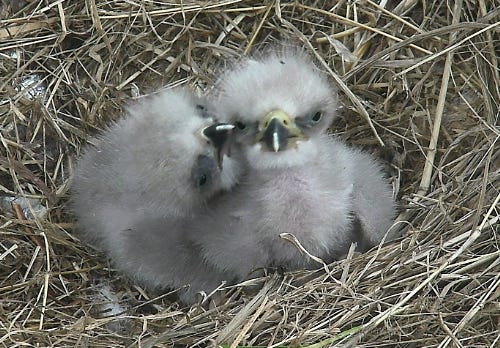
7. PRNewswire is some other source for images that typically are restricted but permission is freely granted to bloggers or other journalists using the pictures as part of a relevant story. The cute baby hawkeye movie is one example.
U.S. Regime Works
The terminal category on the Flickr advanced license search is 1 gateway to a vast resource that many bloggers overlook: By definition, nearly all images produced past the federal authorities are bachelor for public use without restriction. This ways that spectacular science images from NASA or the National Institutes of Wellness are among the assets that are costless for the taking. (The rule is not so simple for land or other government units, but these can be swell sources, too.)
In addition to images that you lot can find on Flickr or Google, here are direct links to a few federal sources for images:
8. Health and science: NIH Epitome Bank and the Public Health Image Library (CDC)
ix. Space, physics, astronomy, geology: NASA
10. Military machine and more: Department of Defense
xi. Outdoors: Agency of Land Direction
Other tools?
If you have other ways to notice images for your blog, please share in the comments.
Disclaimer: This article is not intended every bit legal advice. Consult your own attorney nigh any specific questions. I am licensed to practice in Maryland.
How To Use Images Without Copyright,
Source: https://medium.com/@sfdoug/photos-11-great-tools-to-find-and-use-images-without-copyright-infringement-2c34dae2559e
Posted by: randallhatione.blogspot.com


0 Response to "How To Use Images Without Copyright"
Post a Comment